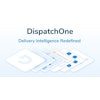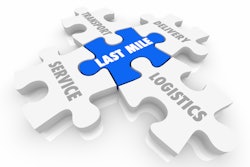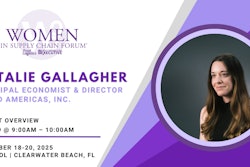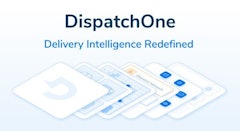
As the peak holiday shipping season collides with the start of a new calendar year, shipping strategies are under more scrutiny than ever. Retailers and e-commerce businesses face a tricky question: how can they meet growing expectations for speed and reliability without letting delivery costs devour their margins?
The answer lies in a shift away from the “fastest for everyone” mindset toward a more precise, data-driven approach; one that uses package-level insights to match each order with the right service level for both the customer and the bottom line.
The service level dilemma
Parcel shipping options run the gamut, from economical ground services to high-cost, same-day or overnight deliveries. While premium options can delight customers, they can also drain profitability, especially when it comes to low-margin or bulky products.
This tension is heightened by two forces:
- Consumer expectations shaped by e-commerce leaders: Many shoppers now view two-day delivery as standard, with some expecting same-day service for certain products.
- Business pressures to protect margins: Blanket use of premium shipping for every order is a fast track to skyrocketing costs, particularly in industries where margins are thin.
In other words, faster isn’t always better. The real goal is finding the sweet spot where speed, cost, and customer satisfaction meet.
Why product profitability should drive shipping decisions
Not all products justify the same delivery speed. A $500 high-margin electronic device might easily absorb the cost of overnight delivery, especially if fast arrival is a factor in the purchase decision. But a $25 low-margin household item? Upgrading it to a premium service level might erase profit entirely.
Businesses that treat shipping as a one-size-fits-all offering risk misallocating resources. Instead, decisions should be guided by product profitability, weight, size, and even return likelihood. By aligning service levels with these factors, companies can protect margins without damaging customer relationships.
Package-level data: The game-changer
At the heart of this more strategic approach is package-level data analysis. This means deep visibility into individual shipments, their costs, and delivery timelines, as well as customer behaviors. This level of detail allows companies to make smarter, more targeted shipping choices.
Here’s what it can reveal:
● Hidden cost drivers. Identify where expenses spike, whether by product category, packaging type, or shipping zone.
● Customer segmentation by delivery preferences. Learn which customers truly value speed and which prioritize reliability or cost savings.
● Product-specific service optimization. Pinpoint items that need premium service versus those that can ship more economically.
● Carrier performance tracking. Compare carrier reliability, speed, and cost to inform negotiations and choices.
● Zone-aware decision-making. Avoid overpaying for premium service when ground delivery meets the same timeframe.
The seasonal pressure test
The holiday rush is the ultimate stress test for any shipping strategy, and for many businesses, it’s not just “peak season,” it’s “peak fee season.” Carriers introduce additional charges during the high-volume period (October through January) to offset the operational strain of surging package volumes.
These peak season surcharges, or “demand surcharges,” aren’t simply arbitrary increases. They reflect the real costs carriers face when warehouses run at full tilt, delivery vehicles log extended routes, and sorting facilities process packages around the clock.
Common forms of surcharges include:
● Flat peak season fees per package during designated weeks
● Additional handling surcharges for oversized or irregular packages
● Delivery area surcharges for rural or hard-to-reach addresses
● Residential delivery fee increases
● Saturday/Sunday delivery premiums
The challenge is that these fees layer on top of already elevated base rates, compounding costs when volumes are highest. A one-size-fits-all service level approach in this period almost guarantees overspending. The good news? With the right preparation, you can soften the financial blow.
Here’s some actions shippers to mitigate these increases:
● Ship early and position inventory closer. Encourage customers to order before surcharges kick in and use regional fulfillment to shorten delivery distances.
● Negotiate peak season terms in advance. Discuss surcharge caps or discounts with carriers before the rush begins.
● Diversify your carrier mix. Shift shipments strategically to minimize exposure and provide backup capacity.
● Optimize packaging to reduce size- and weight-based fees. Adjust packaging to lower dimensional weight charges.
● Use technology for real-time cost optimization. Automatically route shipments to avoid surcharge-heavy options when possible.
Businesses that enter peak season with this proactive playbook can keep both costs and delivery times under control, while still meeting customer expectations.
Looking ahead to the New Year
Once the holiday peak subsides, January is the perfect time to turn seasonal lessons into a year-round advantage. Review performance data from the rush: Which products had the highest shipping costs? Where were premium service levels overused? Which carrier choices produced the best balance of speed and cost?
That retrospective is especially critical heading into 2026, because major carriers have already announced surcharge and fee changes that could significantly impact budgets.
Some carriers are implementing peak demand surcharge increases of 5-9% year-over-year for high-volume shippers, beginning as early as late September and running into January. Lower thresholds for additional handling fees and changes to oversize and unauthorized package charges took effect in mid-July, tightening requirements and raising costs for bulky items.
Others began measuring large package and additional handling surcharges (LPS rates) based on cubic size rather than length plus girth in August, while raising zone-based LPS rates. Fuel surcharges - already a volatile cost - remain high, with domestic ground at 20.5% and air exports and imports exceeding 24% in some cases.
Why does this matter for next-year planning? These adjustments underscore two realities:
● Surcharge costs are dynamic and will continue to shift throughout the year, not just during peak season.
● Packaging optimization and carrier diversification will be even more critical to staying competitive as dimensional thresholds tighten and fuel charges remain elevated.
By using package-level data to simulate these new cost structures, businesses can adjust service level rules, negotiate contract terms in advance, and proactively route shipments to the most cost-effective carriers. The companies that do their homework now will be the ones avoiding budget surprises later.
Ensuring profitability and customer service go hand-in-hand
Choosing the right parcel shipping service level is no longer just a logistical decision; it’s a profitability strategy. Businesses that rely on data instead of assumptions can match each shipment to the service level that makes the most sense for the product, the customer, and their business.
As the busiest shipping weeks of the year approach, the winners won’t be the ones offering the fastest delivery to everyone. They’ll be the ones offering the right delivery for every order. That’s how you build customer loyalty and sustainable growth in an expensive and fiercely competitive market.

















![Pros To Know 2026 [color]](https://img.sdcexec.com/mindful/acbm/workspaces/default/uploads/2025/08/prostoknow-2026-color.mduFvhpgMk.png?ar=16%3A9&auto=format%2Ccompress&bg=fff&fill-color=fff&fit=fill&h=135&q=70&w=240)

